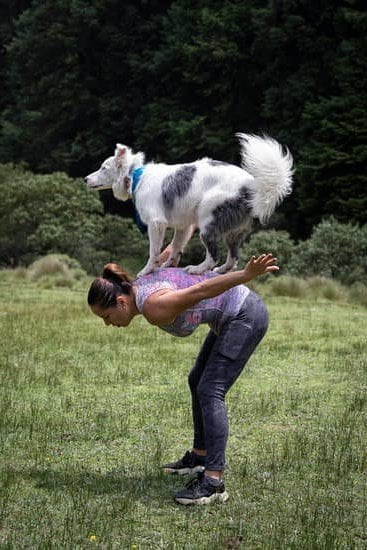Are you wondering how to train your dog to wear shoes? Many pet owners overlook the importance of dog shoes, but they can actually provide numerous benefits for your furry friend. From protecting their paws from hot pavement or icy sidewalks to providing better traction, dog shoes can be a valuable addition to your pet care routine.
Introducing your dog to the concept of wearing shoes is an essential first step in the training process. Many dogs may initially resist the idea of wearing shoes, but with patience and positive reinforcement, you can help them become comfortable with this new experience. Choosing the right shoes for your dog is also crucial, as proper fit and quality materials can make a significant difference in their overall comfort and acceptance of wearing shoes.
Once you have selected the right pair of shoes for your dog, it’s important to gradually get them used to wearing them indoors before venturing outside. This gradual approach can help reduce any resistance or discomfort your dog may initially experience. Walking in shoes outdoors will then need to be introduced using positive reinforcement and consistent training techniques.
Introducing Your Dog to the Concept of Wearing Shoes
When it comes to training your dog to wear shoes, the first step is to introduce the concept to them in a positive and gentle manner. Dogs are creatures of habit and may be resistant to any change in their routine, so patience and consistency are key. Start by placing the shoes in front of your dog and allowing them to sniff and investigate the new objects. Use treats or positive reinforcement to create a positive association with the shoes.
Next, encourage your dog to touch the shoes with their nose or paw. You can do this by holding a treat near the shoe and rewarding them when they interact with it. Repeat this step several times until your dog is comfortable approaching and touching the shoes on command. Remember to use a calm, encouraging tone of voice throughout this process.
It’s important to note that not all dogs will immediately take to wearing shoes, so don’t be discouraged if your furry friend doesn’t show immediate interest. Consistent training and patience will be key in helping them adjust to this new accessory. Remember that every dog is different, so it’s essential to tailor your approach based on your specific pet’s personality and behavior tendencies.
| Training Step | Description |
|---|---|
| Introduce Shoes | Allow dog to sniff and investigate |
| Positive Reinforcement | Reward interaction with treats |
| Repeat Training | Consistency is key for success |
Choosing the Right Shoes for Your Dog
Understanding the Different Types of Dog Shoes
When it comes to choosing the right shoes for your dog, it’s important to understand the different options available. There are various types of dog shoes, including slip-on booties, Velcro-strap shoes, and high-top sneakers. Each type serves a specific purpose, whether it’s keeping your dog’s paws warm in cold weather or protecting them from rough terrain during outdoor activities.
Finding the Perfect Fit
Just like humans, dogs have different paw sizes and shapes, so it’s crucial to find the right fit for maximum comfort and effectiveness. Measure your dog’s paws according to the manufacturer’s guidelines and consider any special needs they may have. It’s also essential to ensure that the shoes are not too tight or too loose, as this can cause discomfort or even injury to your furry friend.
Considering Material and Durability
The material of the shoes is another important consideration. Look for durable materials that are both comfortable and long-lasting. Some popular options include rubber soles with traction, water-resistant fabric, and breathable mesh. Depending on your dog’s activities, you may also want to consider features such as reflective strips for visibility during nighttime walks or waterproofing for rainy days.
Overall, selecting the right shoes for your dog involves understanding their unique needs, ensuring a proper fit, and choosing durable materials that will withstand various outdoor conditions. By following these guidelines, you can set your pet up for success when it comes to wearing shoes.
Gradually Getting Your Dog Used to Wearing Shoes Indoors
Once you have chosen the right shoes for your dog, it’s important to introduce them gradually to the concept of wearing shoes. Start by placing the shoes near your dog’s bed or in an area where they spend a lot of time. This will allow them to get used to the smell and presence of the shoes without feeling pressured to wear them.
After a few days, gently put the shoes on your dog for short periods of time while they are indoors. Reward them with treats and praise each time they wear the shoes without showing discomfort. It’s important to make this a positive experience for your dog, so be patient and understanding if they resist initially.
As your dog becomes more comfortable wearing the shoes indoors, increase the amount of time they spend wearing them. You can also engage in activities that your dog enjoys while they are wearing the shoes, such as playing with their favorite toy or receiving belly rubs. This will help create positive associations with wearing shoes and make the process more enjoyable for your furry friend.
| Training Progress | Indoor Activity |
|---|---|
| Day 1-3 | Place shoes near dog’s bed |
| Day 4-7 | Gently put shoes on for short periods inside |
| Week 2-3 | Increase time spent wearing shoes indoors; engage in enjoyable activities |
Teaching Your Dog to Walk in Shoes Outdoors
Start With Short Outdoor Walks
When your dog has become comfortable wearing shoes indoors, it’s time to start taking short walks outside. Start by putting on the shoes and heading out for a brief walk around the block or in a familiar area. This will help your dog get used to the feeling of walking in shoes on different surfaces such as pavement, grass, and dirt.
Use Positive Reinforcement
As you introduce outdoor walks with shoes, continue to use positive reinforcement techniques such as treats and praise. Whenever your dog takes steps without resistance or discomfort in the shoes, be sure to reward them with treats and verbal praise. This will help reinforce the behavior of walking comfortably in shoes.
Gradually Increase Distance
Once your dog is able to walk comfortably in shoes for short distances, gradually increase the length of the walks. This will help your dog build confidence and adapt to wearing shoes for longer periods of time. Be patient and attentive to your dog’s behavior during these walks, and be prepared to take breaks if needed.
By following these steps and being consistent with training, you can successfully teach your dog to walk in shoes outdoors. Remember that every dog is different, so it’s important to be patient and understanding throughout the training process. With time and positive reinforcement, your furry companion will eventually feel comfortable walking in their shoes wherever they go.
Dealing With Resistance or Discomfort From Your Dog
Introducing your dog to wearing shoes can be a challenging process, especially when they show resistance or discomfort. It’s important to approach this training with patience and understanding to ensure a positive experience for your furry friend. Here are some tips on how to handle resistance or discomfort from your dog when training them to wear shoes:
1. Gradual introduction: Start by allowing your dog to investigate the shoes on their own terms. Place the shoes near their bed or in their play area so they can get used to the sight and smell of them. Use positive reinforcement such as treats and praise whenever your dog shows curiosity towards the shoes.
2. Desensitization techniques: Once your dog is comfortable around the shoes, gently touch their paws while offering treats and praise. This will help desensitize them to the sensation of having something on their paws, making it easier for them to accept wearing shoes.
3. Short practice sessions: When it comes time for your dog to actually wear the shoes, start with short practice sessions indoors. Secure the shoes snugly but not too tight, and allow your dog to walk around for a few minutes at a time. Again, use positive reinforcement and gradually increase the duration of wearing the shoes.
It’s important to monitor your dog’s body language and behavior during these training sessions. If you notice signs of distress or discomfort, remove the shoes immediately and try again later. Remember that each dog is unique, so be patient and adapt the training methods according to your pet’s individual needs and preferences.
Maintaining and Cleaning Your Dog’s Shoes
Dog shoes are a great way to protect your dog’s paws from harsh weather conditions, chemicals on the ground, or rough terrain. However, just like any other piece of dog gear, it’s important to maintain and clean your dog’s shoes to ensure they remain effective and comfortable for your furry friend. Here are some tips on how to care for your dog’s shoes:
1. Regular Inspections: Check your dog’s shoes regularly for any signs of wear and tear. Look out for loose seams, worn-out soles, or any damage that could compromise the effectiveness of the shoes.
2. Cleaning Routine: Establish a regular cleaning routine for your dog’s shoes. Depending on the type of material, you may need to hand wash them with mild soap and water or use a gentle cycle in the washing machine. Make sure to thoroughly dry them before putting them back on your dog.
3. Storage: Properly store your dog’s shoes when not in use. Keep them in a clean and dry place to prevent mold or bacteria growth.
4. Replacement: Keep track of how often you’re using the shoes and replace them as needed. Over time, the material can wear out, decreasing its effectiveness at protecting your dog’s paws.
By following these maintenance and cleaning tips, you can ensure that your dog’s shoes remain in good condition while providing maximum protection for their paws.
Additional Tips:
Remember that with proper maintenance and cleaning, your dog will be able to enjoy wearing their shoes comfortably while staying safe from potential hazards outdoors.
Troubleshooting Common Issues With Dog Shoes
When it comes to training your dog to wear shoes, there may be some common issues that you encounter along the way. It’s important to address these issues in order to ensure that your dog is comfortable and properly protected when wearing shoes.
One common issue that dog owners face is their dog trying to remove the shoes with their teeth or paws. This behavior can be frustrating, but it’s important to understand why your dog may be doing this.
One way to troubleshoot this issue is to make sure that the shoes fit properly and are comfortable for your dog. If the shoes are too tight or uncomfortable, your dog may naturally try to remove them. Additionally, you can use positive reinforcement and rewards to teach your dog that wearing shoes is a positive experience. By providing treats and praise when your dog keeps the shoes on, they will start associating wearing shoes with something enjoyable.
Another common issue is when a dog refuses to walk or move around while wearing shoes. This can be due to discomfort or simply because they’re not used to the feeling of wearing footwear. To address this issue, start by getting your dog used to wearing the shoes indoors before venturing outside.
Gradually increase the amount of time they spend wearing the shoes and provide plenty of positive reinforcement during this process. This will help them become more accustomed to walking in shoes and build their confidence.
Furthermore, if your dog shows signs of discomfort such as limping or refusing to put weight on a particular paw while wearing the shoes, it’s important to re-evaluate the fit and adjust as necessary. Constantly assessing how your pet behaves while in their new attire allows both you and them adapt better over time allowing for more successful training sessions being less stressful.
Celebrating Success and Rewarding Your Dog for Wearing Shoes
After putting in the time and effort to train your dog to wear shoes, it is important to celebrate the success of your training efforts and reward your dog for their cooperation. This positive reinforcement will help solidify the behavior of wearing shoes and make it a more enjoyable experience for your furry friend.
One way to celebrate success and reward your dog for wearing shoes is by using treats. Whenever your dog willingly puts on their shoes without resistance, immediately reward them with their favorite treats. This will create a positive association with the act of wearing shoes and encourage them to continue doing so in the future.
In addition to treats, you can also celebrate success by giving your dog praise and affection. When they successfully wear their shoes without any issues, shower them with verbal praise, belly rubs, or playtime as a way of showing them that you are proud of their accomplishment. This positive reinforcement will strengthen the bond between you and your dog while also motivating them to continue wearing their shoes.
Finally, consider celebrating and rewarding your dog for wearing shoes by taking them on a fun outdoor adventure. Whether it’s going for a walk in the park or playing at the beach, allowing your dog to engage in enjoyable activities while wearing their shoes can serve as a positive reinforcement of their good behavior.
This will not only make wearing shoes more enjoyable for your dog but will also provide an opportunity for both of you to bond and have fun together.
By celebrating success and rewarding your dog for wearing shoes, you can ensure that they feel motivated to continue this behavior and make the training process more effective and enjoyable for both of you.
Additional Tips and Resources for Dog Shoe Training Success
In conclusion, training your dog to wear shoes can be a challenging but rewarding process. Understanding the importance of dog shoes, from protecting their paws in extreme weather to providing traction on slippery surfaces, is the first step in this training journey. Introducing your dog to the concept of wearing shoes and choosing the right pair that fits comfortably are essential factors in the process.
Gradually getting your dog used to wearing shoes indoors and teaching them to walk in shoes outdoors will require patience and consistency. It’s important to acknowledge any resistance or discomfort from your dog and address it with positive reinforcement and reassurance. Additionally, maintaining and cleaning your dog’s shoes will help ensure their comfort and long-term use.
As you progress through the training process, troubleshooting common issues with dog shoes might arise. Seeking additional tips and resources for dog shoe training success can be helpful in overcoming any obstacles you may encounter along the way.
Remember to celebrate every small milestone and reward your dog for their progress; this will reinforce their positive association with wearing shoes. With dedication and perseverance, you can successfully train your dog to wear shoes and provide them with added protection and comfort during various activities.
Frequently Asked Questions
How Do I Get My Dog to Wear Shoes?
Getting your dog to wear shoes can take some time and patience. Start by introducing the shoes to your dog slowly, letting them sniff and investigate. Then, gradually put the shoes on for short periods, giving praise and treats to create a positive association.
How Do I Desensitize My Dog to Shoes?
Desensitizing your dog to shoes involves gradually exposing them to the shoes in a non-threatening way. Start by simply leaving the shoes around for your dog to see and smell, then move on to touching their paws with the shoes nearby. Gradually work up to actually putting the shoes on their paws.
Will My Dog Get Used to Shoes?
With consistent training and positive reinforcement, most dogs can get used to wearing shoes. It may take some time for them to adjust, but with patience and praise, many dogs can become comfortable wearing shoes, especially if they associate it with enjoyable activities like walks or outdoor adventures.

Welcome to the blog! I am a professional dog trainer and have been working with dogs for many years. In this blog, I will be discussing various topics related to dog training, including tips, tricks, and advice. I hope you find this information helpful and informative. Thanks for reading!





